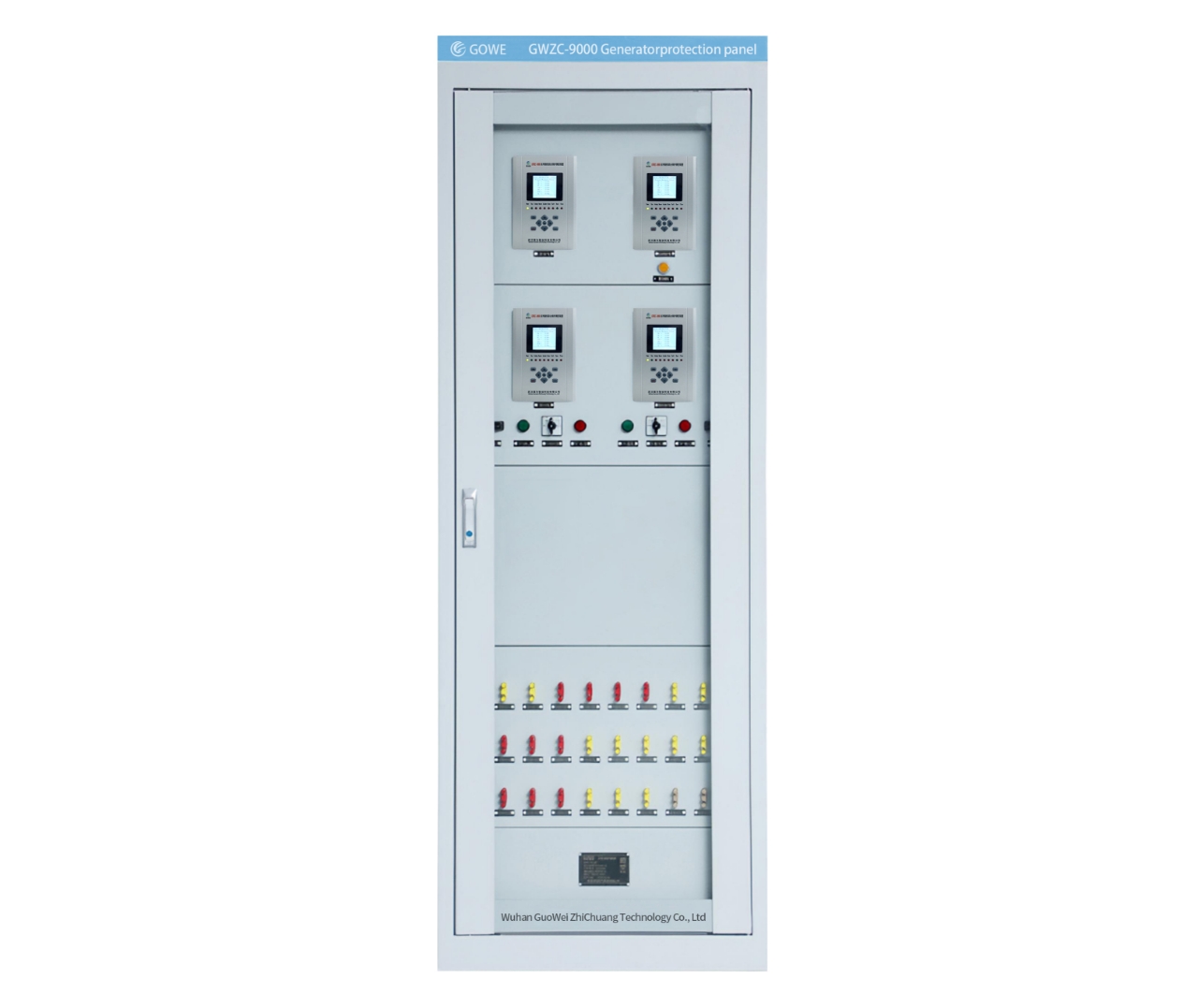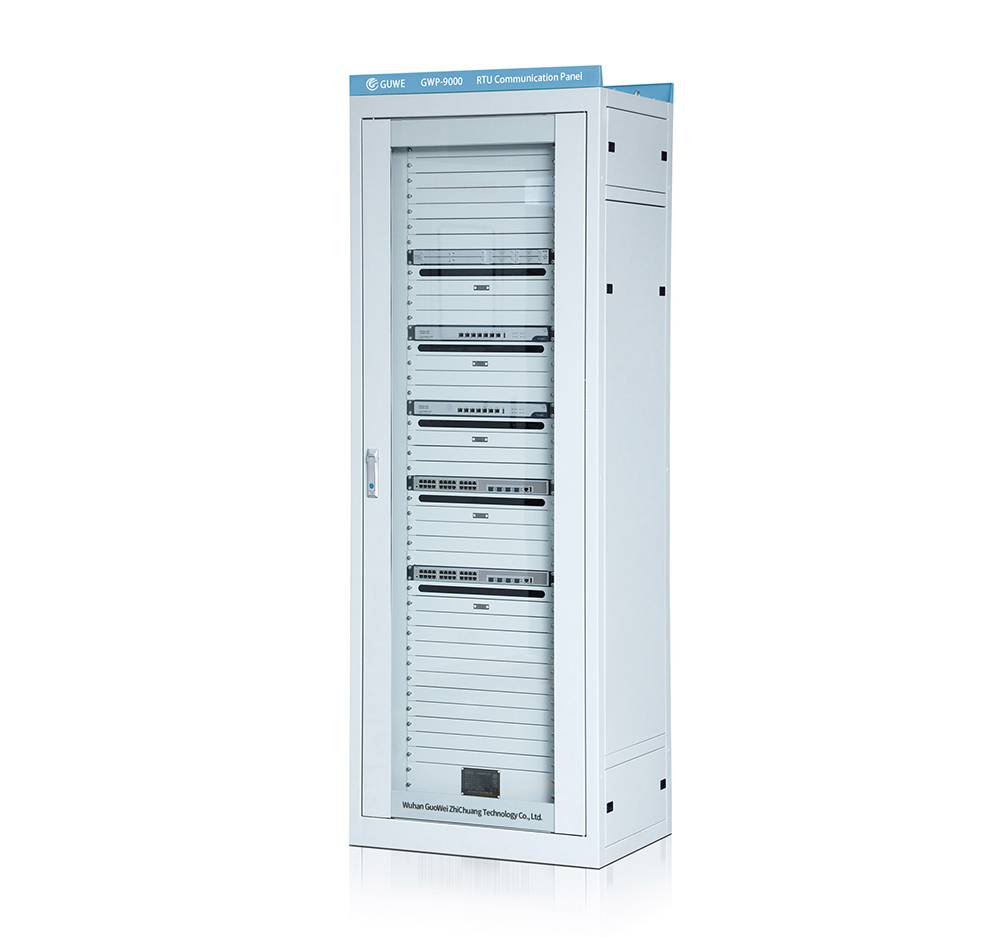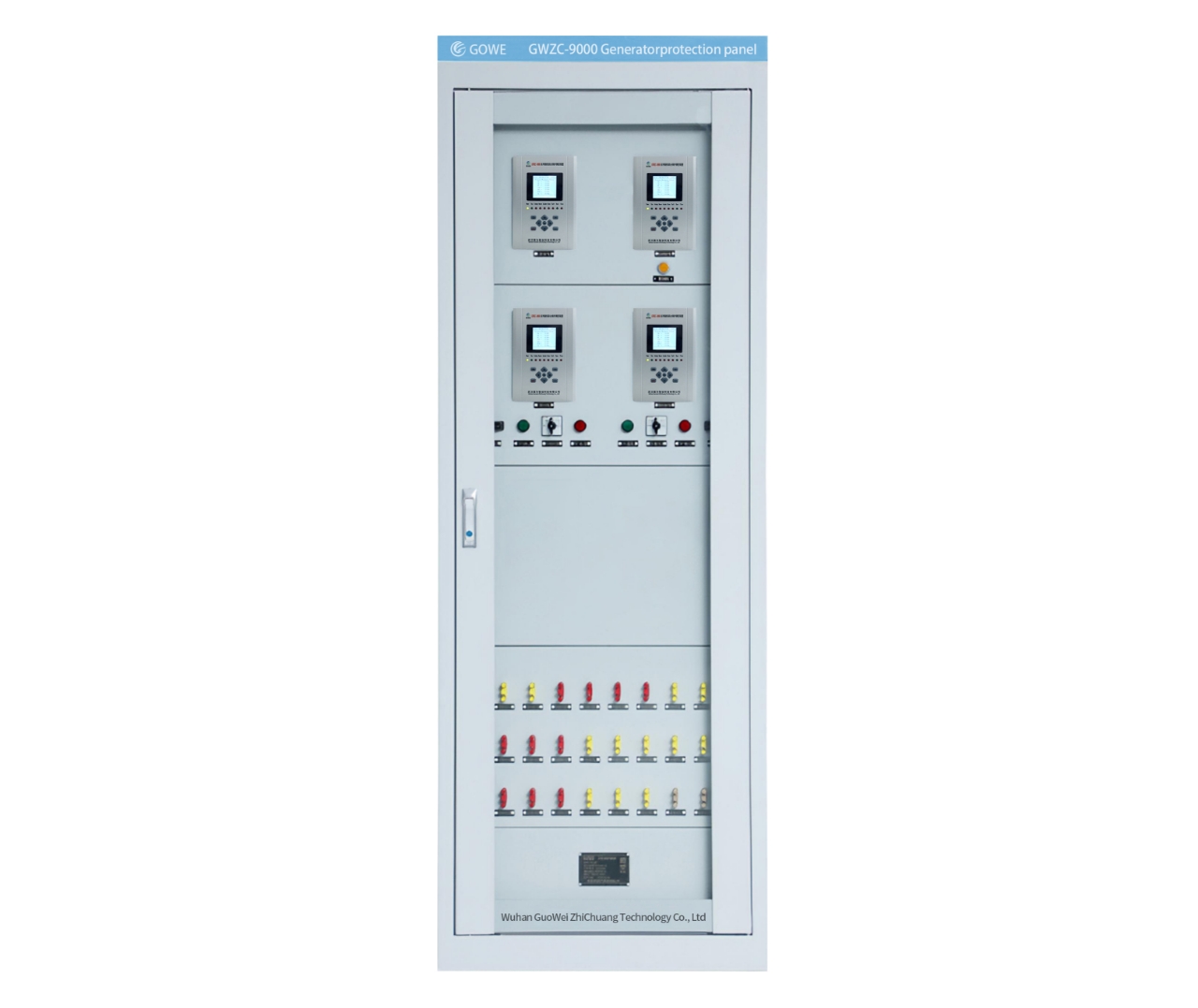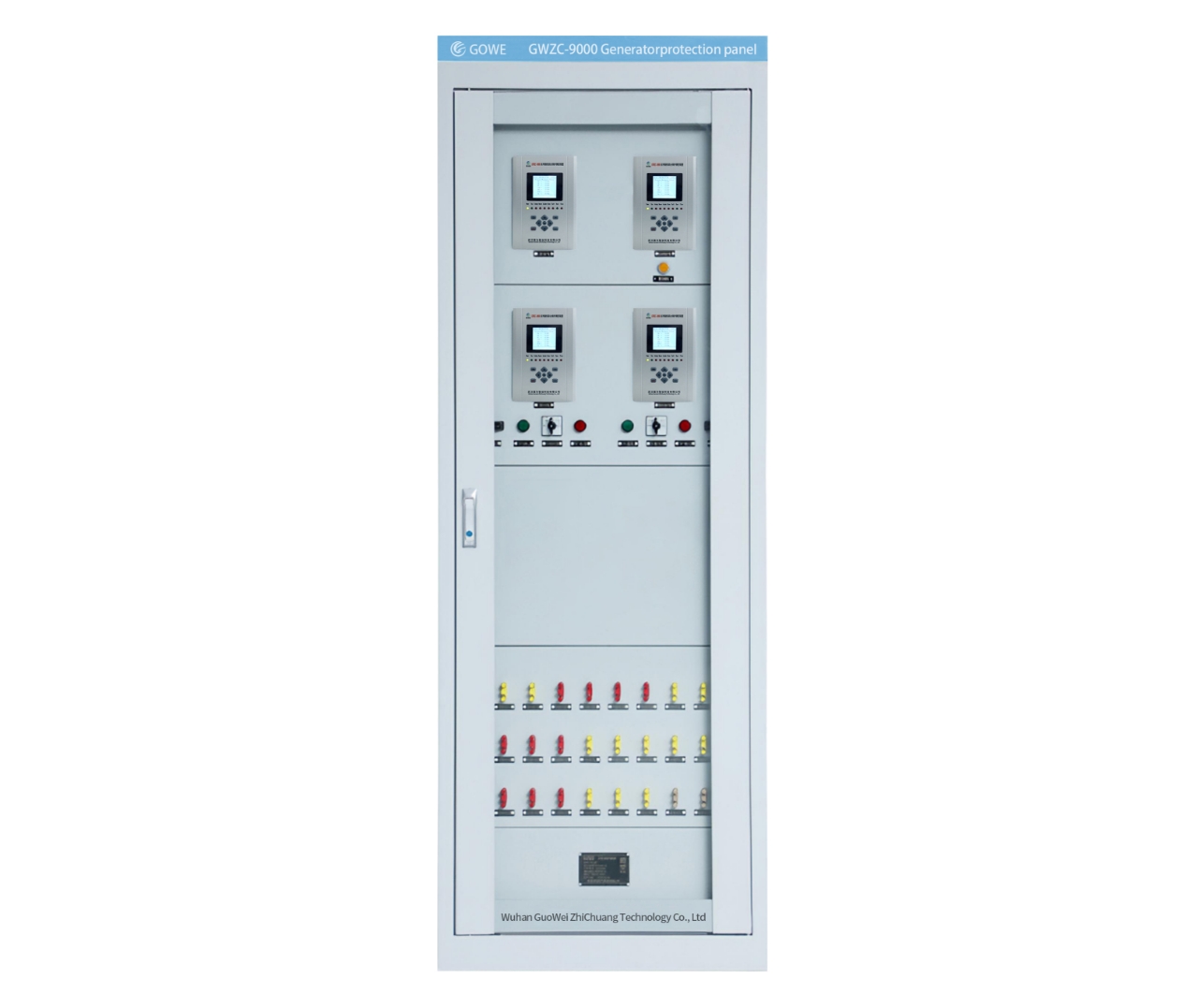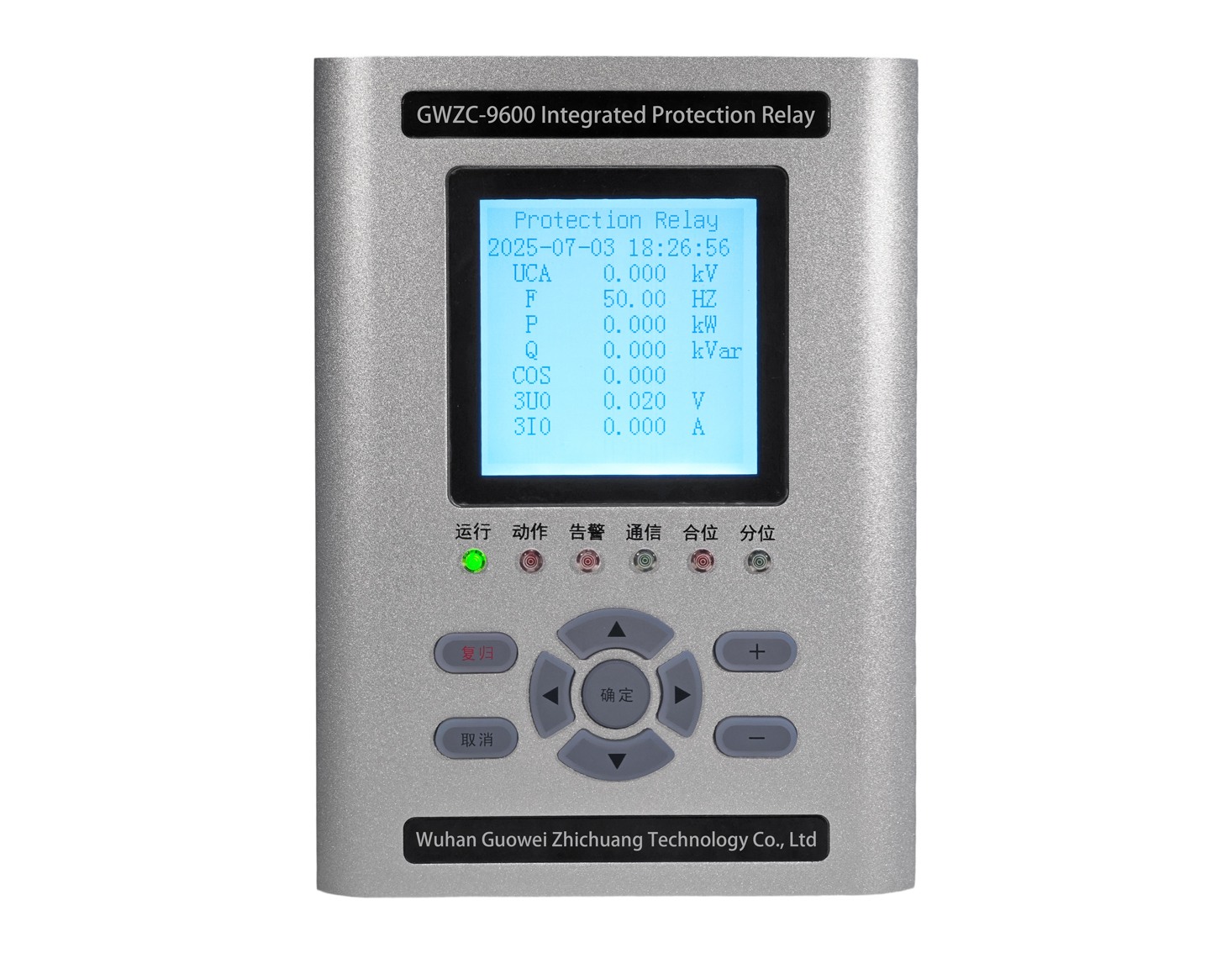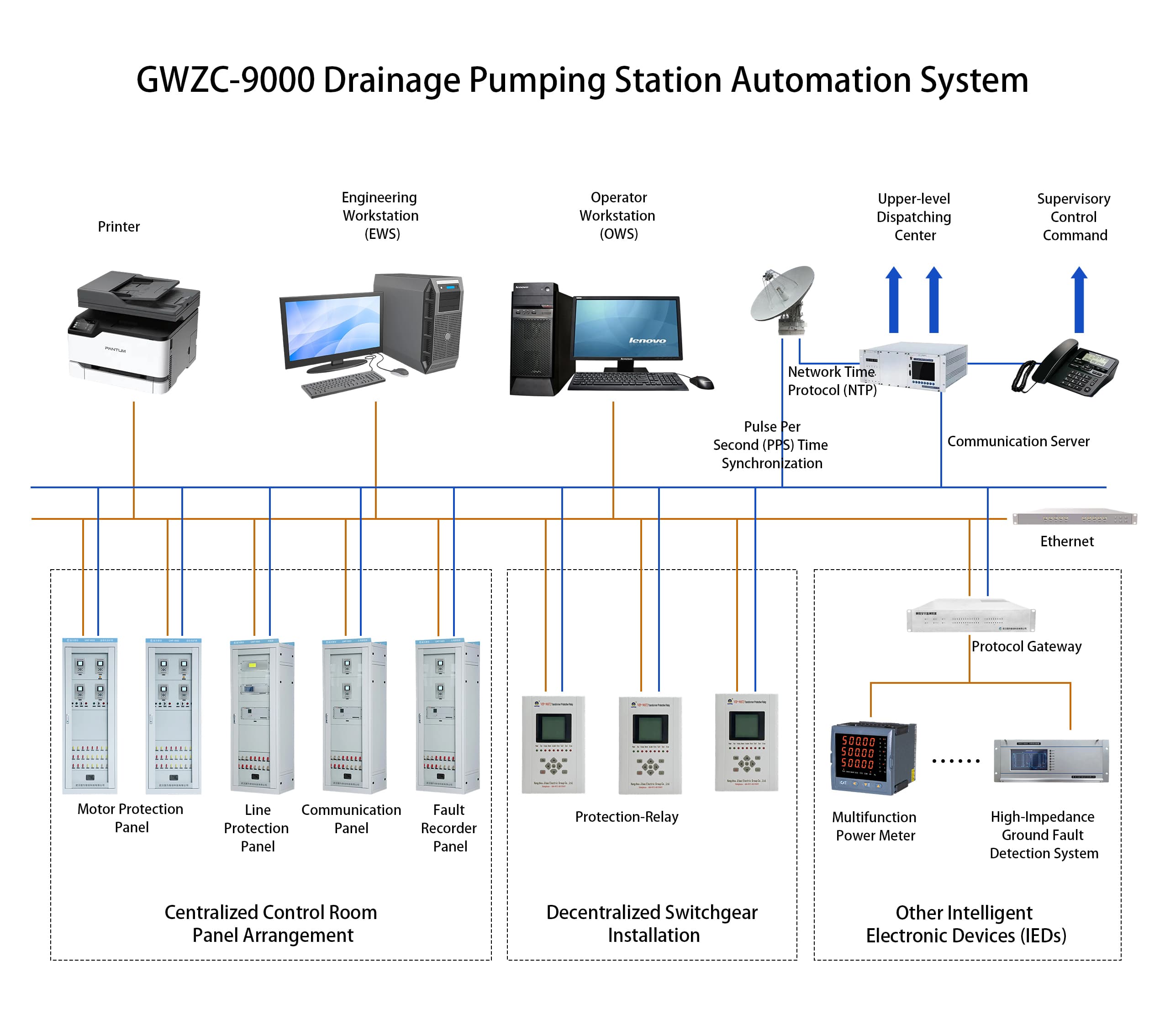

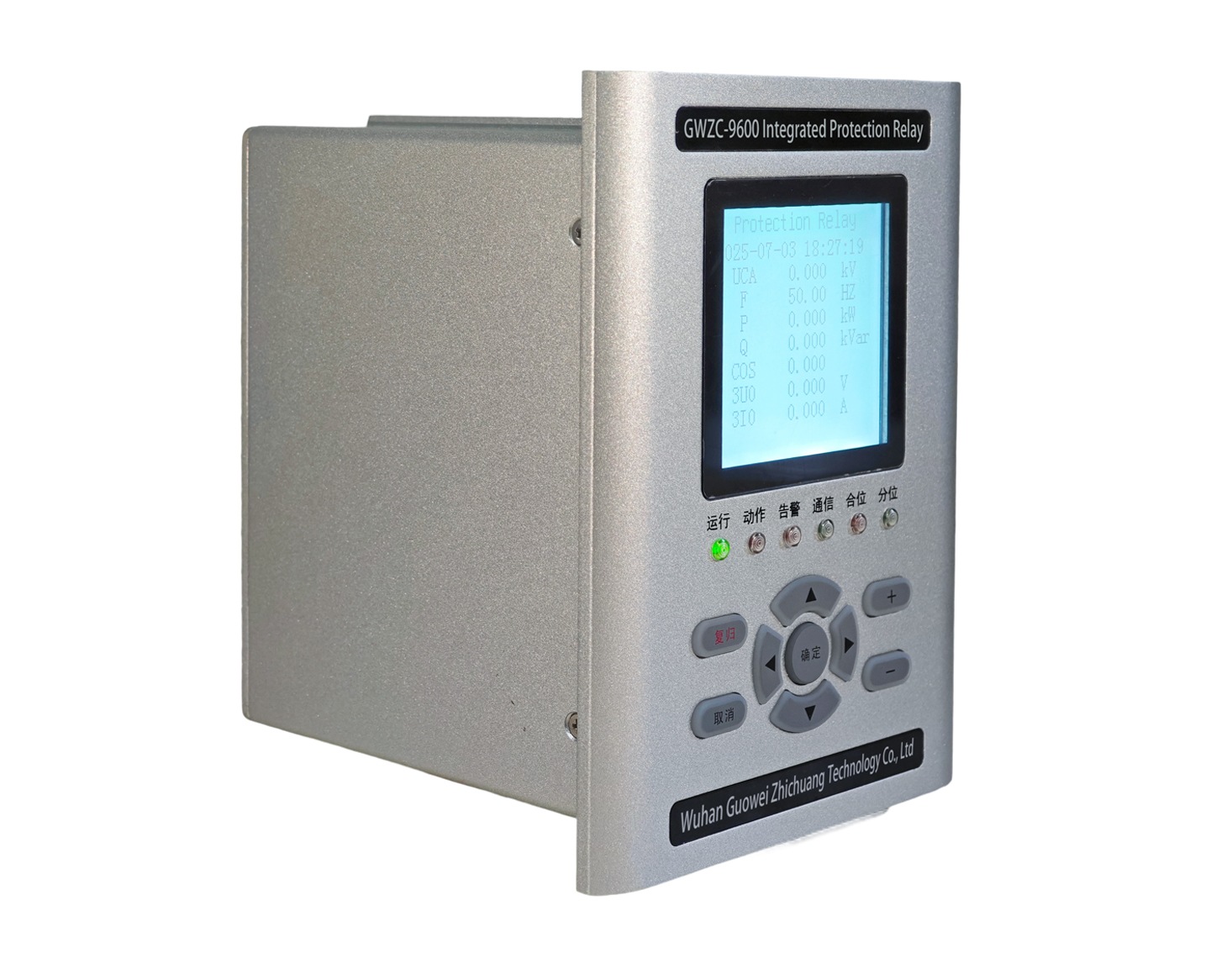
Application Scope : The GWZC-9000 low-frequency and low-voltage load shedding panel is a critical protection device in power systems. It automatically sheds non-essential loads according to preset sequences when system frequency or voltage abnormally drops, preventing system collapse.
Product functions(ANSI):27 | 59 | 81U | 81O | 60
Communication protocols : IEC 60870-5-101/103/104 ,IEC 61850(MMS/GOOSE/SV), Modbus RTU & Modbus TCP,RJ-45 , RS-485
Function Description : The GWZC-9000 Low-voltage load shedding panel is specifically designed for underfrequency/undervoltage load shedding or islanding protection. It can simultaneously measure the voltage and frequency of two bus sections. Each bus section’s input voltages are Ua, Ub, and Uc. The device can trip up to 25 circuits(Up to 54 circuits).
Low-frequency and low-voltage load shedding panel Introduction
The low-frequency and low-voltage load shedding panel is a critical safety automation protection device in power systems. When grid faults cause frequency or voltage to abnormally drop below preset danger thresholds, this equipment automatically disconnects predetermined amounts of non-critical loads through multi-stage strategies, thereby maintaining power balance. It prevents continuous deterioration of frequency/voltage that could lead to system collapse or widespread blackouts, ensuring secure and stable grid operation.
Low-frequency and low-voltage load shedding panel Main Functions
1.Measures the voltage, frequency, and their rate of change for two busbar sections at the installation point. Can be connected to either two busbar sections within the same system or busbars of two different voltage levels.
2.The low-frequency and low-voltage load shedding panel features independent 8-stage outputs for both frequency and voltage (5 standard stages + 3 special stages). Each stage’s output can be flexibly set via parameters, and any stage can directly control a designated trip output. Typically configured to trip up to 25 lines, it meets the load-shedding requirements of a single substation.
3.When the power system experiences a significant active power deficit, The low-frequency and low-voltage load shedding panel can accelerate load shedding based on the rate of frequency change (df/dt). During the first-stage load shedding, it may simultaneously trigger the second stage or both the second and third stages to promptly arrest frequency decline and prevent frequency collapse incidents.
4.Voltage-Based Load Shedding: In case of voltage drop due to reactive power deficiency in the power system, the device automatically disconnects partial power consumer loads based on the voltage reduction value. This ensures reactive power balance and restores grid voltage to normal levels. The voltage-based load shedding stages are identical to the frequency-based load shedding stages.
5.Accelerated Load Shedding via du/dt: When the system voltage declines too rapidly, the device can accelerate load shedding based on the rate of voltage change (du/dt). This helps promptly halt voltage decline, prevent voltage collapse incidents, and restore voltage within permissible operating limits.
6.Adaptive Short-Circuit Discrimination: Equipped with a unique adaptive fault detection logic, the device eliminates the need for coordination between low-voltage load shedding settings and protection relay operating times. It ensures fast operation during system undervoltage while remaining secure against maloperation during short-circuit faults.
7.df/dt and du/dt Blocking Function: Includes blocking logic based on the rate of frequency (df/dt) and voltage (du/dt) changes to prevent maloperation caused by short-circuit faults, load feedback, or abnormal frequency/voltage conditions.


